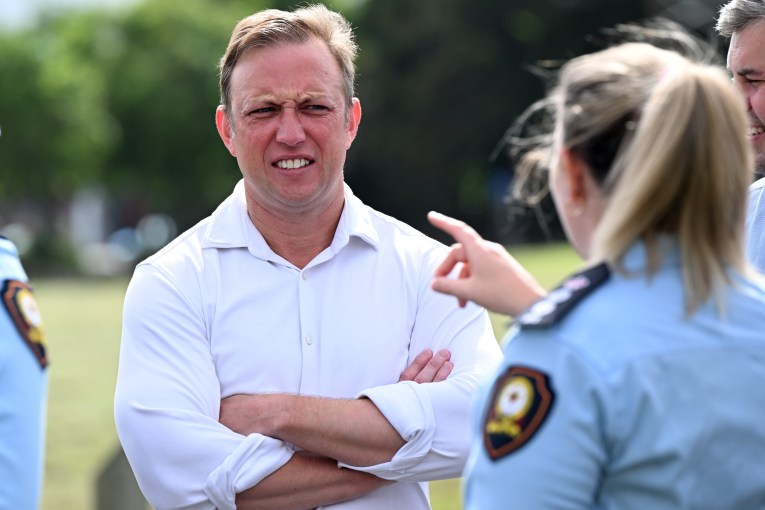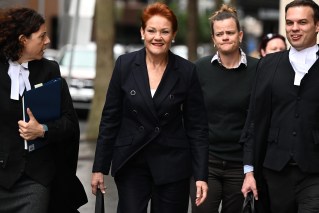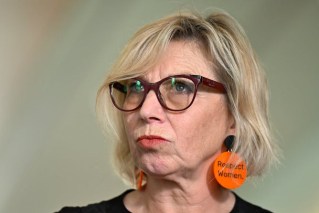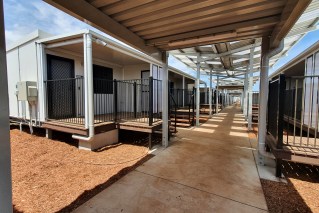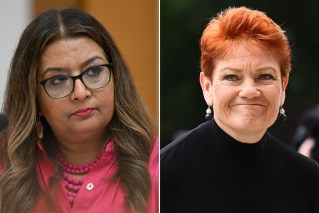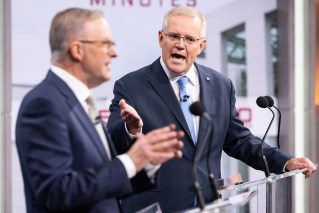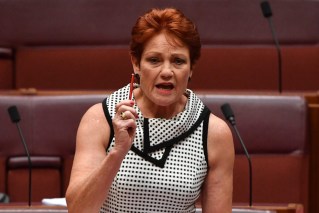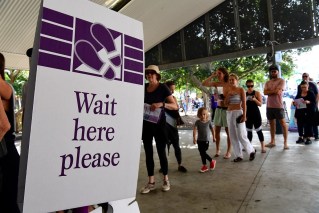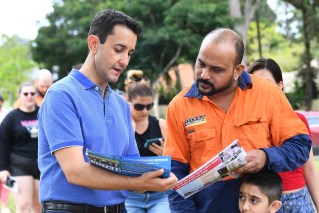Could the Greens be on the verge of a political miracle? The next 12 months will tell the tale
Next year’s Brisbane City Council and State Government elections have a common fascination for our politics junkie, Dennis Atkins. He’s been looking at the trends, the public mood and the opportunities that abound. It just might be the Year of the Green.
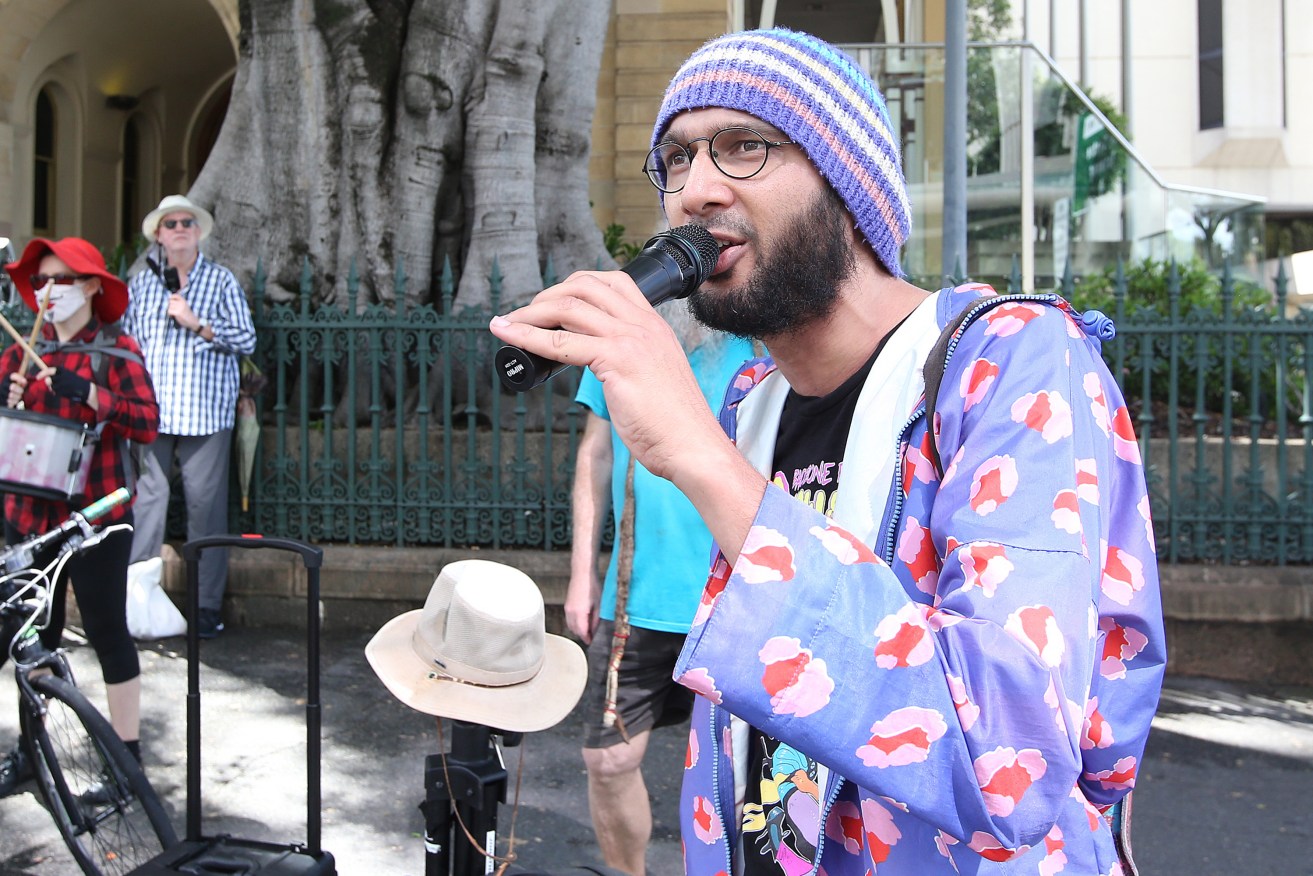
Greens Councilor Jonathan Sri speaks during a Climate action march on parliament house during a protest in Brisbane, Thursday, December 2, 2021. (AAP Image/Jono Searle) NO ARCHIVING
Premier Annastacia Palaszczuk says she loves to get out and about all the time, talking with Queenslanders.
It’s her instinctive response to increasingly persistent criticism that she’s out of touch and no longer has her cherished “Ms Relatable” moniker.
These days it’s next to impossible to find anyone in state parliament – among Labor MPs, the Opposition benches or in the grab bag of Greens, Katters and indies – who freely calls Premier Palaszczuk a woman of the people.
It’s easy to suggest Palaszczuk meet these people or those – the community groups on Bribie Island she famously connected with during the pandemic for example – but this columnist was struck by an unlikely unmet connection from which the premier might benefit.
Queensland’s taxpayer funded theatre of the absurd – also known as state parliament – is replete with all manner of modern day caricatures: Shakespearean stage strutters, puffed-up buffoons, donkeys on the edge, the seriously stupid and the miraculously mediocre.
A crowded windowless room across and down the corridor from the staff and members’ canteen is filled with the parliament’s pair of Greens Party MPs and their reed-thin staff allocation.
As Queensland rolls into a summer folding into election year 2024, the Greens’ contingent of Michael Berkman (member for Maiwar, in Brisbane’s inner west stretching up to the top of Mt Coot-tha) and Amy McMahon (across the snaking Brisbane River in South Brisbane), are working on plans and strategies.
There’s not much adjustment needed. These politicians just keep doing what they started in their initial bids to enter state parliament – for Berkman, that was when he was first elected in 2017 and voted back in three years later, while McMahon toppled former deputy premier and treasurer Jacki Trad with a two candidate preferred vote of more than 55 percent in 2020.
The state Greens operate like their federal counterparts – Max Chandler-Mather in Griffith (covering McMahon’s fiefdom and beyond) and Stephen Bates (Brisbane) and Elizabeth Watson-Brown) who, between them, have Bergman’s seat covered and plenty of other territory that’s in the party’s keen-eyed sights.
Look at any of the Facebook pages (or other platforms) for these MPs – as well as Gabba Ward councillor Trina Massey – and you’ll find a consistent pattern. It’s all local, almost hyper-local, and verging on formula driven.
Berkman has been doing it for six successful years and those who’ve come after him thumb the playbook, locking in community events focussed on developments such as the vigorously opposed plans for a trio of towers near the Teneriffe Ferry Terminal, the probably pokie-backed expansion of the Greenslopes Bowls Club, a forum on redevelopment in Kangaroo Point, the Hong Kong mini-me development at the Kurilpa end of Montague Road and, the Big Bang of campaigning for Greens across central and inner-Brisbane, the development-driven demolition and inconvenient building preceding the 2032 summer Olympics.
It’s hard to work out what’s more blinkered within the Palaszczuk Government: the inability to see genuine opposition to the redevelopment of the Gabba football ground for Olympic sports, driven by the wrecking ball that’s going through much of the East Brisbane State school (to be “absorbed” into the new glittering, unwanted stadium) or blindness to the broader community sentiment.
At the last home finals game for the Brisbane Lions, locals in the crowd swapped tales of disapproval, incredulous looks and commentary about how this-into-that-won’t-go when discussing the new Olympics stadium, and then grouched about how much worse getting public transport will be following the multi-billion dollar “investment” planned. Do any of the people behind the planning actually talk to folk in these neighbourhoods?
Beyond the Gabba there’s a growing resentment about money being spent on the Olympics. Without overruns, the 2032 Games are set to cost just a tick over $7 billion. When you budget for what Transport Minister Mark Bailey calls the principle to “fund into escalation” that seven will probably reach double digits.
This local activity, with political smarts across spanning three tiers of government, by a band of community organisers who were either trained by the ALP or would have fitted right into that party a quarter of a century ago but see nothing but exclusion and factional games in those parts these days, will likely pay big dividends in 2024.
Former Gabba Ward representative Jonathan “Johnno” Sriranganathan is revered in the Greens Party as an organiser’s organiser who couldn’t be more in touch with the people and has a whip sharp knack of turning heads.
The LNP and Labor are on a unity ticket, saying he couldn’t be more out of touch – someone who lives on a boat in the city reach of the river and wouldn’t know a kitchen table issue if he stumbled into someone’s home.
Johnno is the Greens Party’s candidate for Lord Mayor, pursuing radical plans for public housing and other populist schemes. The Greens reckon he’s a secret weapon, the LNP says he will depress the Greens vote in the wards and Labor say he will stop their vote bleeding to their left. Someone doesn’t know what they’re talking about.
The Greens are an impressive activist party, throwing up big issues such as diverting corporate super profits to issues with wide public support, for instance public housing and investment in education.
The Greens strategy is held together with an overarching populist glue – it’s featured at the top of their communications, leads off their Facebook posts and backs in anything that needs a funding source.
A simple, appealing pitch, the party doesn’t take corporate money, funding activities through small donations, allowing them to promote themselves as unburdened from the fund-raising, dark money world.
Is it popular? You bet it is. Do people notice? For sure.
“Labor’s drift federally and its inertia and lack of ideas at a state level grease the wheel for votes to move across to the Greens just as the tough guy act Peter Dutton plays with, flicking through scripts written by the Donald Trump’s pair of Steves – Bannon and Miller – one a populist communicator, the other a nasty fear-monger.”
Picking up electoral spoils in this landscape, the Greens could win as many as 10 Brisbane City Council wards, especially if a collapse in the Labor vote is accompanied by soft LNP support.
As well as holding the Gabba, they’ve got their sights on targets as far afield as Jamboree and Tennyson in the south west, Enoggera and The Gap in the north west, a knot of wards around the CBD including, but not exclusively, Central, Walter Taylor, Holland Park and Morningside and possible wildcards, Hamilton and Marchant. All ambitious but doable.
In the state election, there’s an equally ambitious agenda. Maybe half a dozen state seats come into focus such as McConnell, Bulimba, Stafford, Ferny Grove, Moggill, and Greenslopes.
If the Greens are to present in Queensland politics to the extent of their ability and ambition, 2024 will be their time. It’s hard to think of when there might be a better opportunity.
